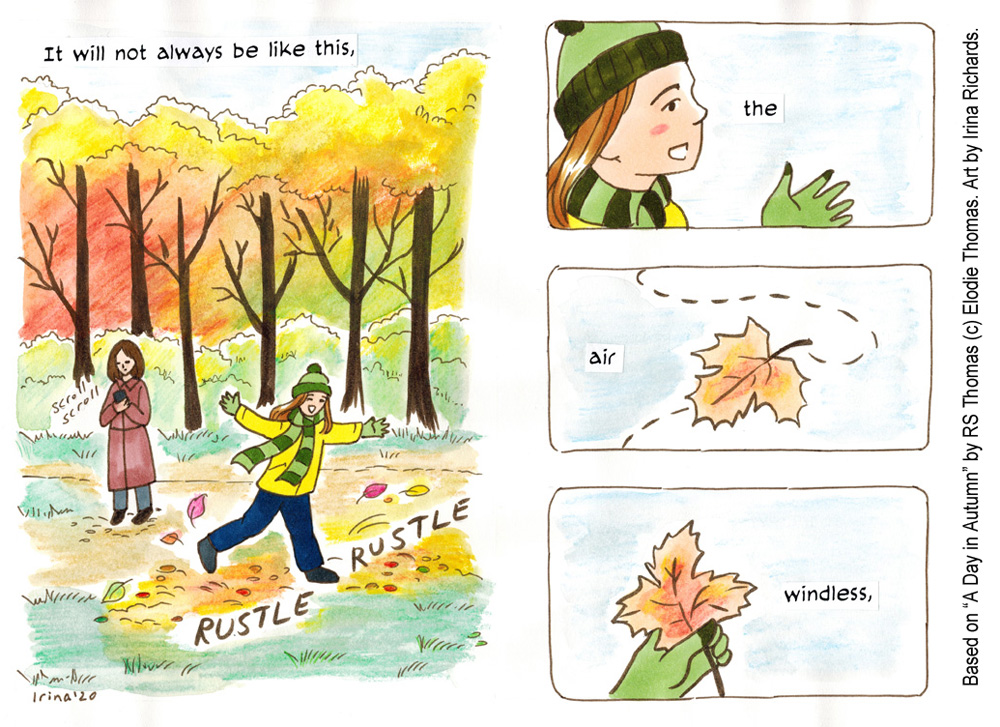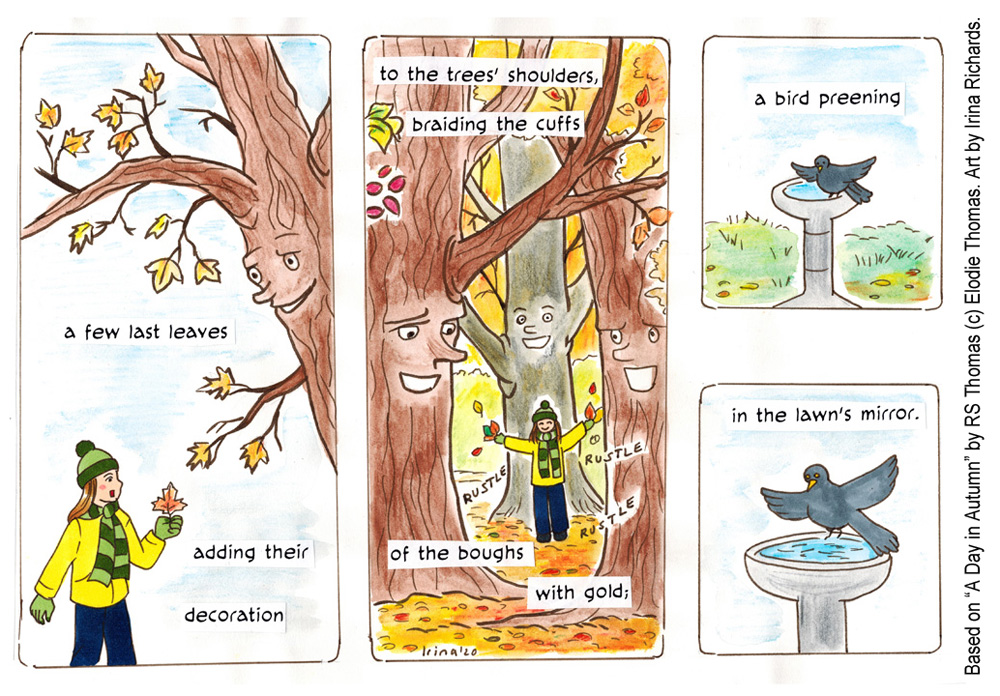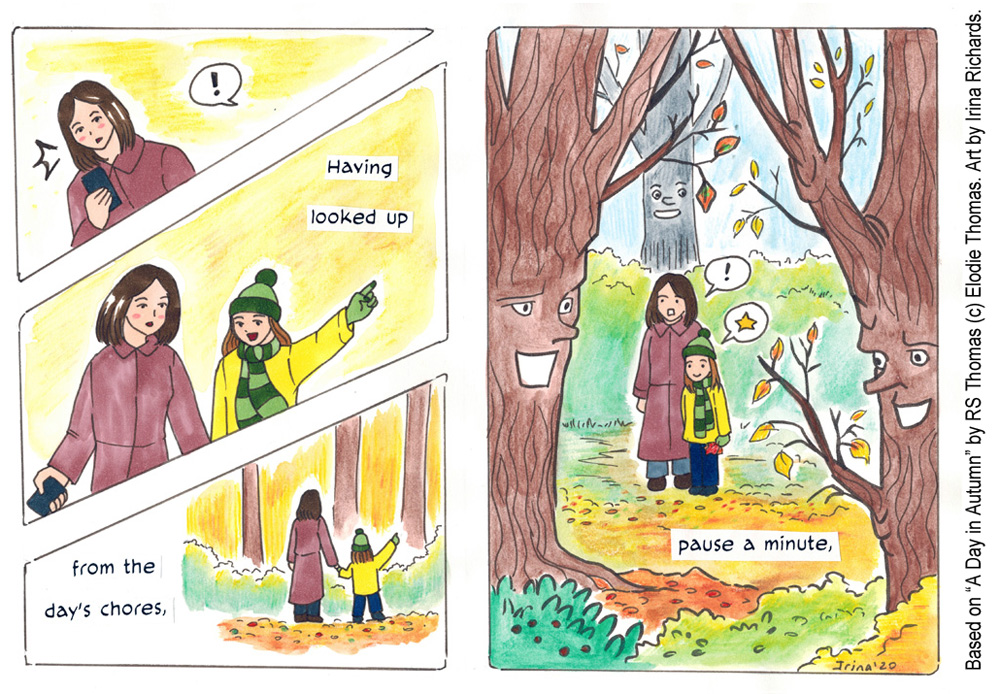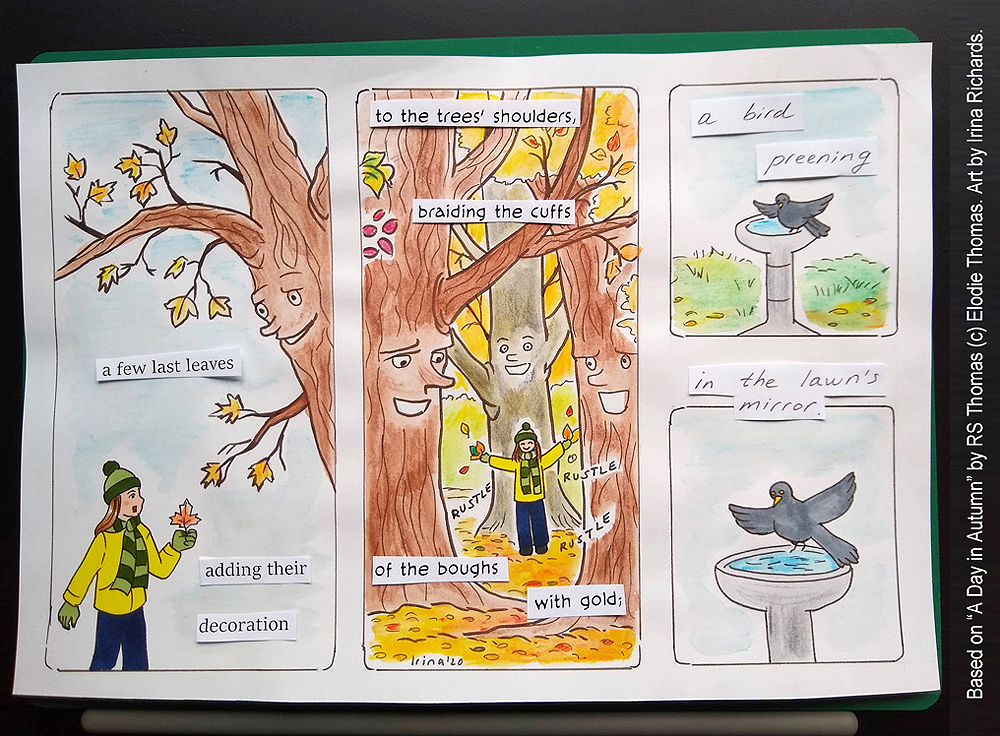DrawAble: Creating a Poetry Comic with Irina Richards
By Irina Richards
Irina Richards is a comics artist, illustrator and educator from Cambridgeshire. Irina enjoys telling stories of everyday experiences and challenges through comics; her art is inspired by history, folklore, nature and poetry. As part of the DrawAble series of resources for learning at home or school, this resource will show children how to adapt poems into their own poetry comics.
What is the aim of this exercise?
-
This resource can be used as a guide, helping children and teenagers to adapt poems into poetry comics. It can provide links to Literacy and offer a creative and personalised way to access poetry.
What age can this exercise be used with?
-
This resource can be used with ages 7 and upwards. It is particularly suitable for KS2 children (aged 7-11).
How long does this exercise take?
-
This exercise may take 1-2 hours. The resource can be extended into a longer project, taking several sessions.
How do I measure success?
-
Success will be measured by the children’s ability to select a poem and create their own art and/or visual story based around it. It will also be measured by the children’s involvement in the activity.
-
More able or engaged children may demonstrate a more adventurous or playful approach to selecting and illustrating a poem. They may want to experiment with art materials they use, and the layout of their comics.
-
Encourage children to try creating art based on a poem – it may not have much narrative in it at the start, and that narrative may emerge later. Remind them to experiment with different elements of the comic – the images, words, and layout.
What can we try after this exercise?
-
Other resources exploring comics, sequential art, visual literacy and narratives.
-
Try other DrawAble exercises and projects.
Which artists might we look at?
-
Julian Peters
-
Louise Crosby
-
Chrissy Williams and Tom Humberstone are a poet-and-artist team who create poetry comics. Their book “Over The Line” is a good starting point if you would like to learn more about poetry comics.
-
Additionally, Scott McCloud‘s books provide a useful first introduction to understanding and creating comics.
-
You may also want to see Irina’s other projects, and books she has published with Sweatdrop Studios.
Introduction
Think comics are all about action and superheroes? Think that poetry is boring and full of old-fashioned words? Well, think again! Comics and poetry – surprisingly – have a lot in common, and can be combined in a fun and artistic way to create poetry comics.
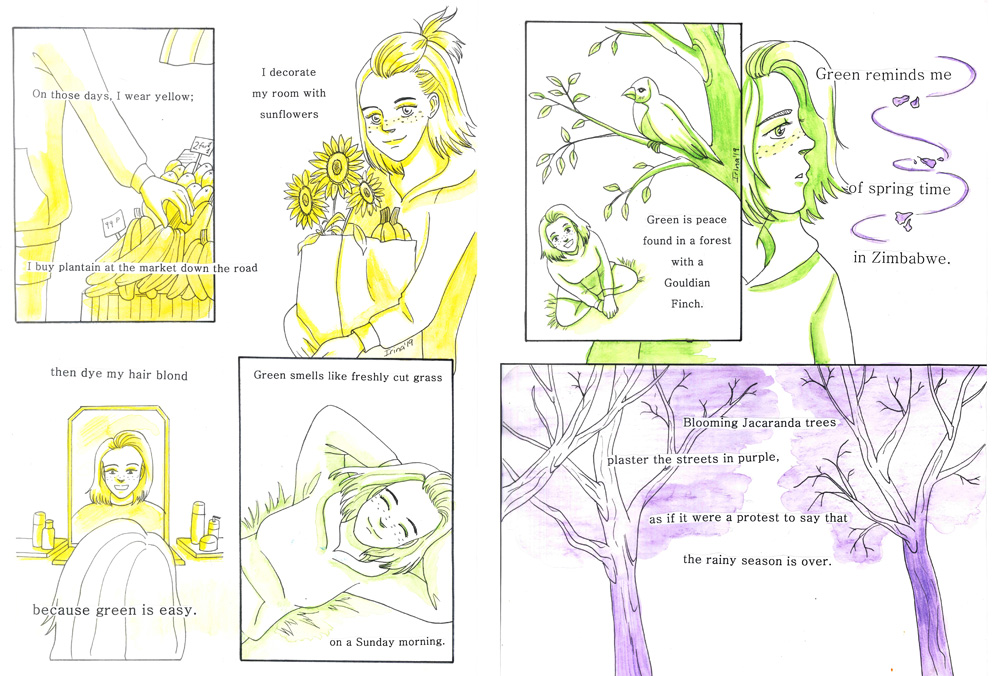
Both comics and poetry create images in our heads, and could be used to communicate strong thoughts and feelings. Comics and poetry are both made up of fragments: in poems, the text is arranged in lines (or groups of lines, called stanzas); in comics, the story is told in “boxes” on the page (called panels).
Most importantly, both comics and poems need the reader in order to work! Our brains help put images or text together to create a complete story, and our emotional response to it. This is why comics scholar Scott McCloud calls the reader “a silent accomplice” – without the reader, comics are just a bunch of disconnected words and images!
Choosing a Poem
To create a poetry comic, you need to choose a poem first. If you are unsure where to start, websites such as The Poetry Foundation. Your school or public library will have poetry books – some of them may have poems based on a particular theme, like “Poems to Save the World With” by Chris Riddell. And of course, you can always write your own poem if you like!
When reading poems, take your time, and choose one that “speaks” to you the most. When you read this poem, what does it make you think and feel? What do you imagine when you read this poem?
For my poetry comic, I have chosen a poem “A Day in Autumn” by my favourite poet, RS Thomas:
It will not always be like this,
The air windless, a few last
Leaves adding their decoration
To the trees’ shoulders, braiding the cuffs
Of the boughs with gold; a bird preening
In the lawn’s mirror. Having looked up
From the day’s chores, pause a minute,
Let the mind take its photograph
Of the bright scene, something to wear
Against the heart in the long cold.
(From “Poetry for Supper” by RS Thomas, first published in 1958 by Rupert Hart-Davis (c) Elodie Thomas)
I liked this poem because it made me think of beautiful autumn trees. There is a forest behind my house and I like watching it change with the seasons. This poem also made me think of how important it is to take the time to look at the beauty of nature and appreciate it.
Planning your Poetry Comic
Once you’ve chosen a poem, you can then think of a story to go with it. It does not have to be a long or complicated one! For example, it could be based on the feelings the poem gives you when you read it. The characters in your poetry comic don’t have to be human, either – you can tell the story from the point of view of a flower, or an animal.
(Some poems already have a story in them – they are called narrative poems. A well-known example of a narrative poem is “A Visit from St. Nicholas”, also known as “The Night before Christmas”!)
You can do some “brainstorming” to develop your ideas. Also, if your poem has any words you are not sure about, make sure you check their meaning. Here, I have created a mind map with some words from the poem:
In my chosen poem, the poet uses personification – talking about trees as if they were people. This gave me an idea to include trees that somehow look alive in my poetry comic. To get more inspiration, I took photos of autumn trees, and thought about all the different colours the leaves have:
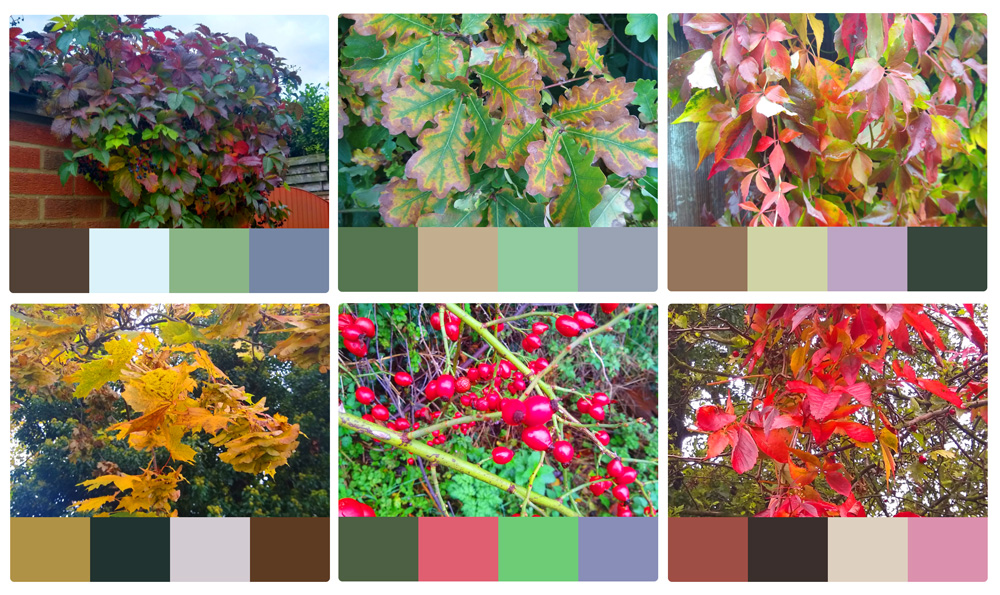 Creating your Poetry Comic
Creating your Poetry Comic
Now you can start drawing your poetry comic. Think of your story as if it was a movie –can you split it up into small “scenes”? You can then draw each of these “scenes” in a separate box on the page – these boxes are called panels. You can draw each panel on a separate piece of paper, if you like, and experiment with panel size, shape and direction. Your panel borders don’t have to be very precise – you don’t even have to use a ruler!
You may find it helpful to cut up your poem, and experiment with different ways of arranging the words in your panels.
The spaces between your panels are called gutters – you can use them to speed up or slow down your story. The wider the gutters are, the slower the story will be. You can also use spaced-out text to achieve the same effect.
Some words in my chosen poem, like “windless” and “pause”, made me think of a slow, still, quiet autumn day – this is why I used wide gutters and spaced-out text:
Here is the finished sketch for my poetry comic:



 You can leave your poetry comic as a sketch – but if you want to continue working on it, you can finish it using any art materials you like! You can colour it using paints, markers or colouring pencils, or add decorative paper to make it a collage.
You can leave your poetry comic as a sketch – but if you want to continue working on it, you can finish it using any art materials you like! You can colour it using paints, markers or colouring pencils, or add decorative paper to make it a collage.
Here, I used brown pen to go over the pencil lines, and coloured the comic with marker pens and watercolour pencils:

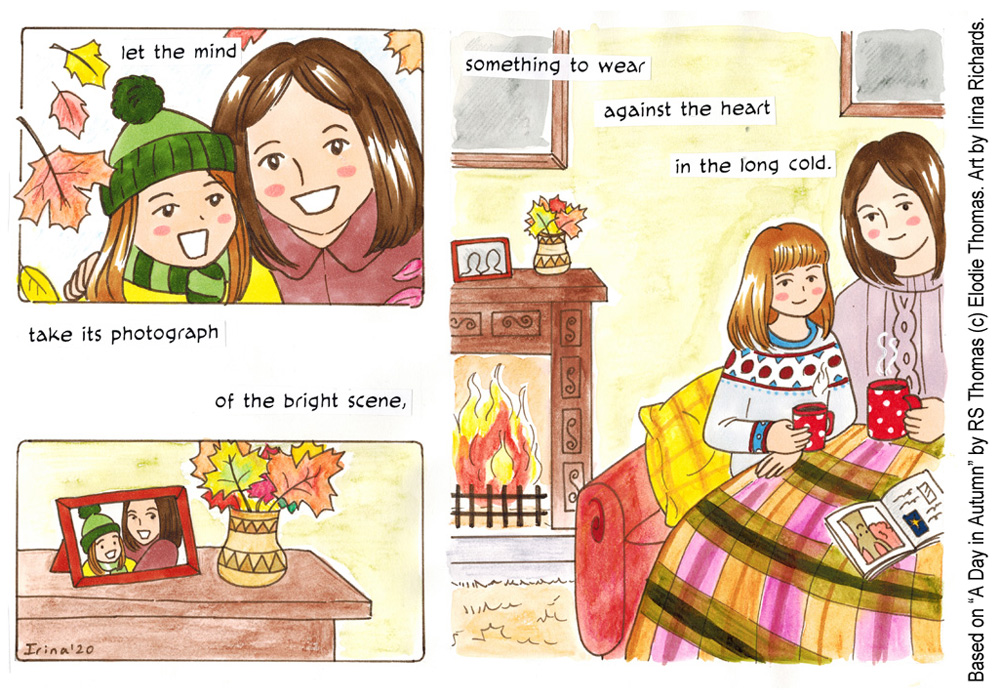
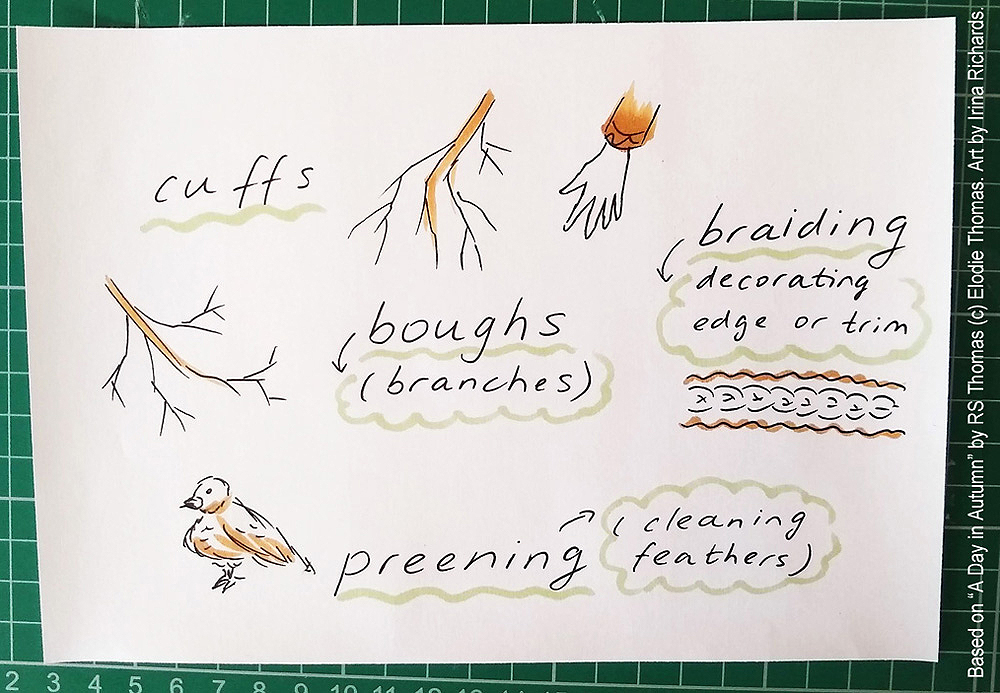
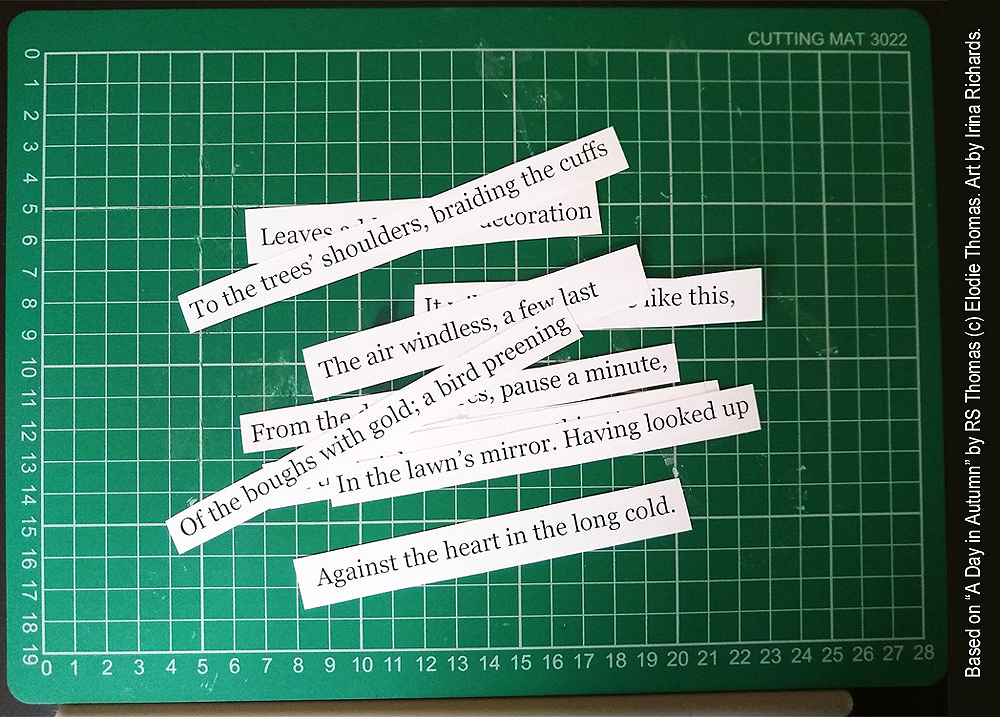
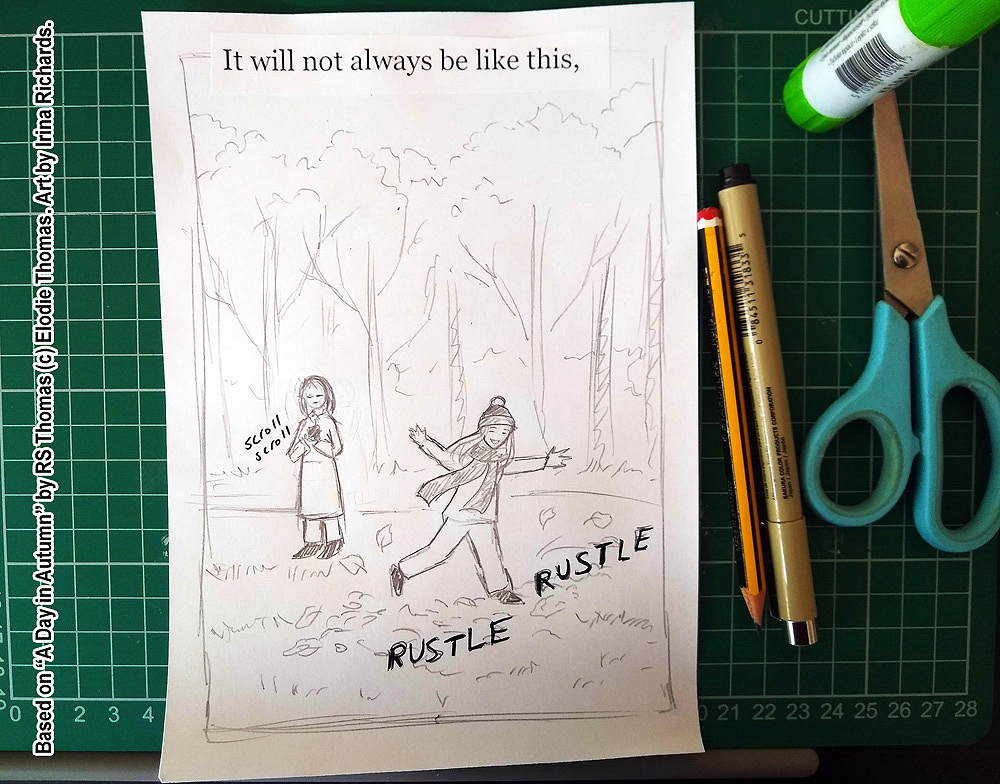
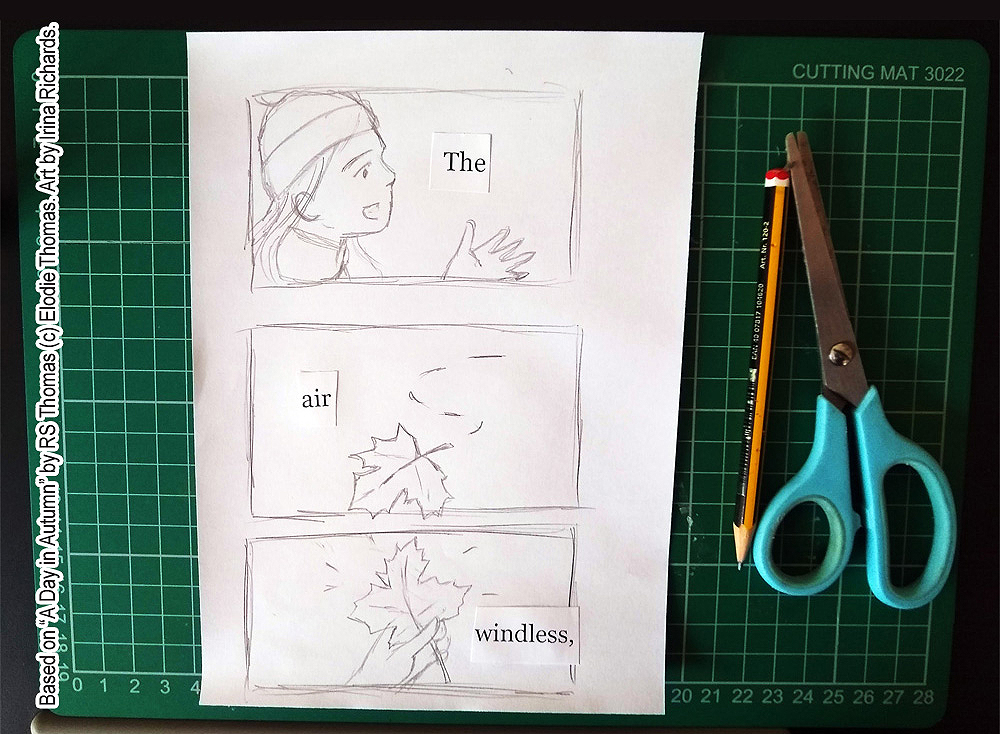
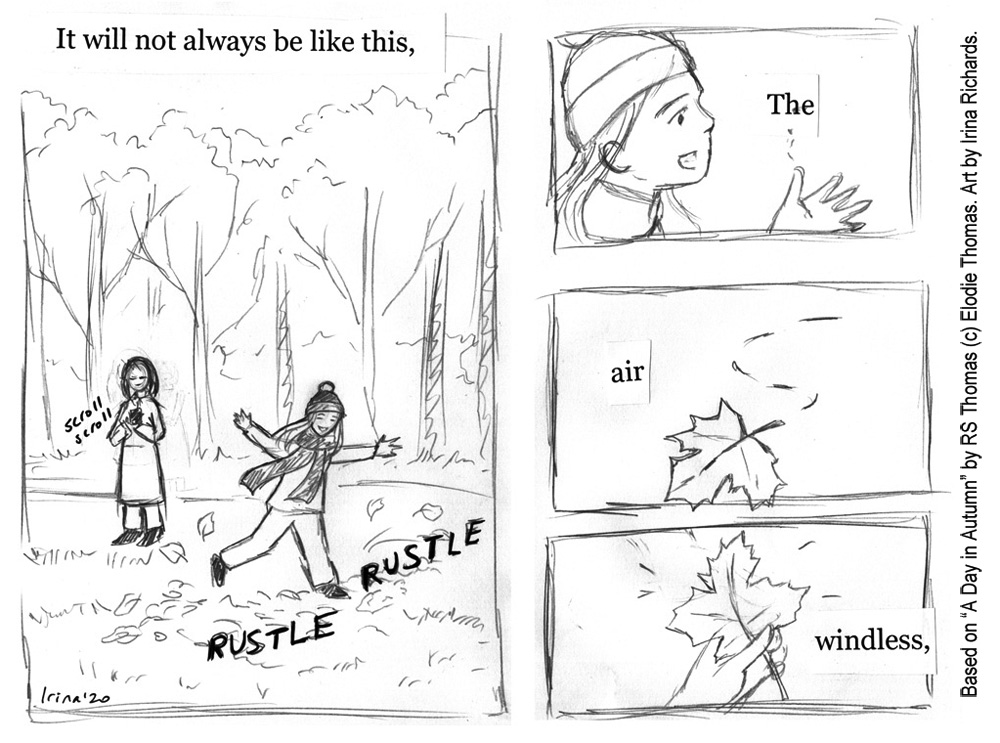
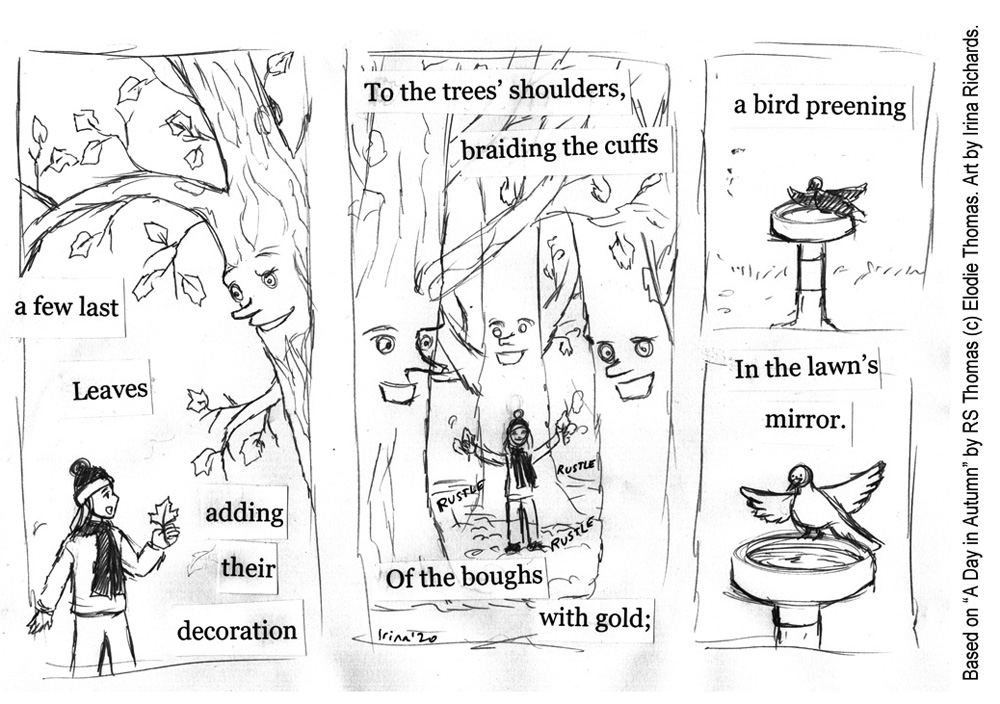
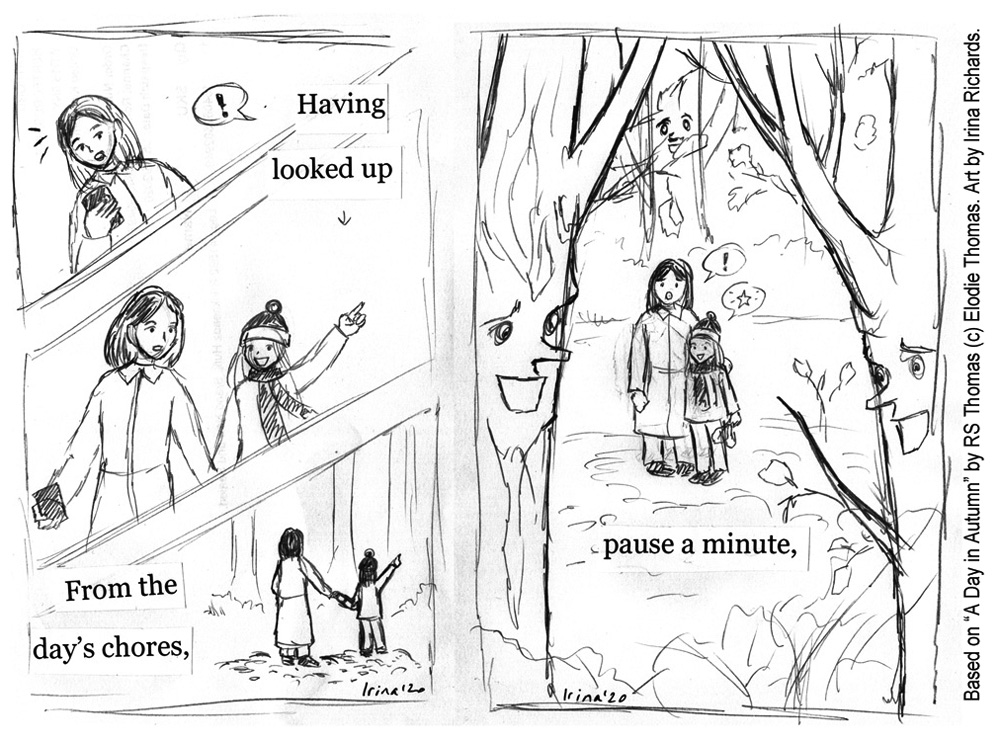
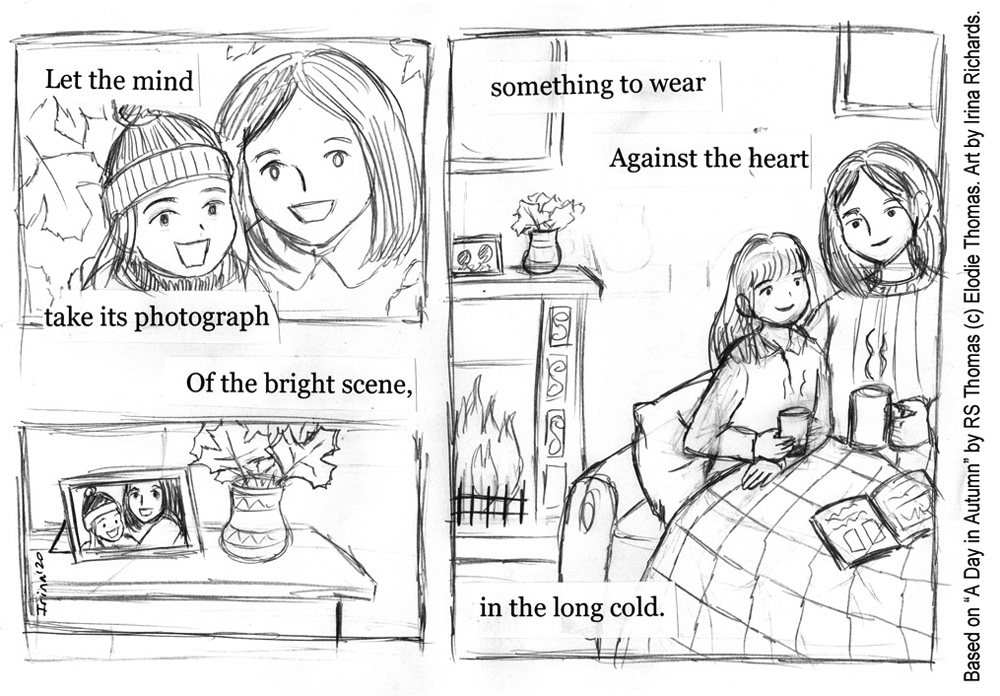 You can leave your poetry comic as a sketch – but if you want to continue working on it, you can finish it using any art materials you like! You can colour it using paints, markers or colouring pencils, or add decorative paper to make it a collage.
You can leave your poetry comic as a sketch – but if you want to continue working on it, you can finish it using any art materials you like! You can colour it using paints, markers or colouring pencils, or add decorative paper to make it a collage.